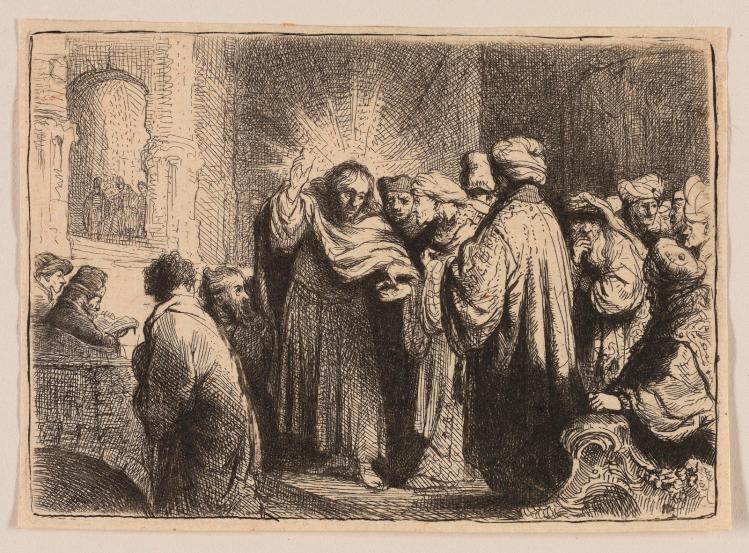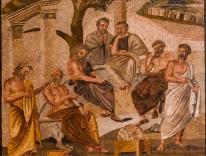
The title of this well-informed book is straightforward enough, but its subtitle—The Christian Origins of Religious Freedom—carries with it an element of surprise. Here the distinguished scholar Robert Louis Wilken sets his face firmly against what he dubs “the dominant narrative” concerning the rise to prominence in the European world of the commitment to religious toleration and freedom of religious practice. According to that narrative, such a commitment, far from being the deliverance of Christianity, represents its antithesis. Religion is “prone to violence,” it says; Christianity is “inescapably intolerant.” It was only in the late-seventeenth and eighteenth centuries, when “the fanaticism of religious believers gave way to the cool reason of the philosophers,” that the commitment to liberty of conscience, toleration, and religious freedom was able to move into the foreground. Catholics especially—at least those of us who are somewhat shamefacedly conscious of the fact that it was only at the Second Vatican Council that such principles were finally to receive formal ecclesiastical approbation—may be even more inclined than most to take that dominant narrative for granted. If that is indeed so, we would do ourselves a favor by reading this book.
It was thinkers like the English philosopher John Locke who had helped shape Thomas Jefferson’s thinking when he became the author of Virginia’s Statute for Religious Freedom. But Wilken draws our attention to the intriguing fact that in Jefferson’s personal copy of his Notes on the State of Virginia, and on the page where he says that one person’s religion does not harm another, he inscribed a passage from the third-century Christian writer Tertullian to the effect that “one person’s religion neither harms nor hurts another,” that coercion has no place in matters religious, and that “every person should be able to worship according to his convictions.”
In directing our attention to this fact Wilken is careful to disavow any intention of suggesting that Jefferson was somehow “influenced” by Tertullian. Instead, it is his purpose to emphasize the fact that early Christian writers like Tertullian, Lactantius, and Origen, members of a fringe religious minority subject to intermittent persecution for not aligning themselves with the officially established imperial cult, had not themselves lost sight of the distinction that the New Testament introduces between religious and political loyalties when it enjoins Christians to render unto Caesar the things that are Caesar’s and unto God the things that are God’s (Matthew 22:17–21, Mark 2:14–17; Luke 20:22–25). Their principled commitment to the freedom to follow one’s conscience in matters of religious belief and practice would later inspire other individual Christian thinkers, even after Christianity itself had been transformed from the religion of a beleaguered minority into an officially established public religion enjoying the support of the Byzantine Empire in the East, of the later Roman Empire in the West, and of the kingdoms that succeeded it during the Latin Middle Ages and endured down into the era of the Protestant Reformation and beyond.
During those later centuries the dominant paradigm on matters religio-political was one or another version of throne-and-altar Christianity. And, along with it, the deeply lodged conviction on the part of the governing authorities, both temporal and ecclesiastical, Catholic and Protestant alike, that uniformity of religious belief and practice, guaranteed as need be by coercion and the suppression of dissenting elements, was nothing less than essential to the peace, well-being, and tranquility of any well-ordered society.
But it is with the persistence of the “subdominant” tradition, traceable back to such early-Christian attitudes as that of Tertullian, that Wilken himself is primarily concerned. Examining the views of individual Christian thinkers—ancient, medieval, and early-modern, Catholic as well as Protestant—he detects in a surprising number of them echoes of those early Christian affirmations of the inviolability of the individual conscience and the illegitimacy of coercion in religious matters. After the turbulence of the Reformation era, with the subsequent crystallization in France, the Netherlands, and England of enduring religious minorities, there was a recrudescence of the original understanding of the church as a voluntary association of the committed rather than a compulsory society imposed from above. Those arguing for tolerance and religious freedom had at their disposal a treasury of affirmations by sympathetic Christian predecessors, ranging from Tertullian himself and Pope Gregory the Great, through Aquinas and Bartolomé de las Casas, all the way down to such seventeenth-century religious separatists as Thomas Helwys, John Murton, and Roger Williams. Thus, in making his own case for religious freedom, the Quaker William Penn was able to lay claim to what he called a “whole cloud of famous [Christian] witnesses.” And, though John Locke made no mention of these witnesses, they formed the background of the highly influential (if more secular) case he made in his Letter concerning Toleration (1689). For Wilken, indeed, Locke’s ideas on religious freedom “cannot be understood without reference to Christianity,” and “in his hands ideas first advanced by Christian thinkers come to be seen as reasonable without mention of origins.”
Wilken lays out his own “subdominant” narrative not only with thoroughness, subtlety, and nuance, but also with a sober sense of the complexity of the story he is unfolding. That duly acknowledged, I trust it won’t seem churlish if I conclude with a comment with which he may not be altogether sympathetic.
I am inclined to think that the revisionist narrative as outlined in Wilken’s book would be more dramatic and stand out more clearly had he done two things. First, he could have emphasized more forcibly—as Jean-Jacques Rousseau did—the sheer novelty and revolutionary character of the New Testament’s insertion of a sharp distinction between what we are accustomed to calling “the religious” and “the political.” Second, Wilken could have made clearer exactly what it was that blunted the force of that distinction during the Roman era and subsequent centuries. It was nothing other, or so I would argue, than the age-old stubbornly persistent tradition of sacral kingship, along with the ideology that sustained it. For that tradition, with its extraordinary longevity and ubiquity, amounted to nothing less than the religio-political common sense of humankind, which was not easily subverted, despite the fact that New Testament texts and the later thinkers who resonated to their signal made it clear that this common sense harbored a way of thinking profoundly at odds with the Gospel. Thus the Book of Revelations polemicized mightily against the blasphemous divinization of the Roman emperor, and other texts (notably Luke 22:24–27) conveyed an oblique deprecation of the Hellenistic portrayal of the monarch as a “living law,” political society’s link with world order and therefore titled appropriately not only as “benefactor,” but also as “shepherd,” “mediator,” and even “savior.” It was in keeping with such New Testament texts when, in the late-eleventh century, Gregory VII broke with prevailing tradition and bluntly insisted that the German emperor Henry IV was simply a layman, nothing more, and the Gregorian reformers proudly proclaimed that “the age of priest-kings and emperor pontiffs” was over.
Such views turned out to be premature. If anything, the belief in the sacrality of kings was to intensify and deepen in the later Middle Ages, until, finally, it drew the papal office itself into its orbit: the popes now emerged as crowned, royal figures, wearing the imperial regalia, dubbed “true emperor” and “living law,” bearing the pagan imperial title of “supreme pontiff,” and presenting themselves as the true successors of Constantine. In the seventeenth century, the great English philosopher Thomas Hobbes was to describe the papacy as “no other than the ghost of the deceased Roman empire sitting crowned on the grave thereof”—an observation no less accurate in its fundamental perception for being derisive in its intent. Under such conditions it is hardly surprising that early Christian arguments in favor of toleration and religious freedom would continue to be marginalized.
Liberty in the Things of God:
The Christian Origins of Religious Freedom
Robert Louis Wilken
Yale University Press, $26, 248 pp.
Please email comments to [email protected] and join the conversation on our Facebook page.
Previous Story
Does Church Teaching Change?
Next Story
Danses Macabres

